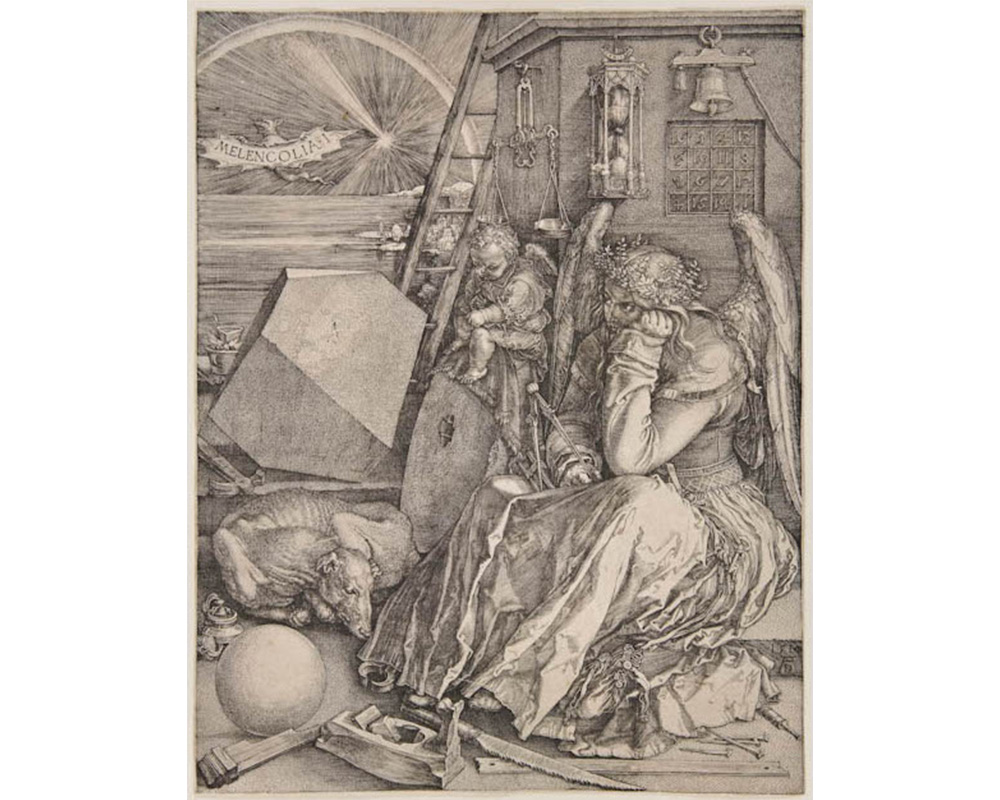
Melancholia I
Guest blogger Michele Wick is a research associate in the Psychology Department at Smith College.
Albrecht Dürer’s Melancholia I, on display in the exhibition Albrecht Dürer: Genius and Fame, intrigues me. As a psychologist researching the complex relationship between creativity and emotional wellbeing, I know some worry that equating mood and artistry could distract attention from an artist’s work. However, if we retreat to 1514, the year Dürer created his iconic engraving, people who suffered the pains of depression had more pressing image problems.
At the time, health was considered to be a balance between four vital fluids or humors - blood, yellow and black bile, and phlegm. The humors affected both body and mind and were the basis for individual health and personality. Melancholia was the result of excess black bile. According to art historian Erwin Panofsky, the afflicted were: “Thin and swarthy…‘awkward, miserly, spiteful, greedy, malicious, cowardly, faithless, irreverent, and drowsy.’” Add ‘surly, sad, forgetful, lazy, and sluggish,’ and it becomes clear that melancholics did not offer much for society to respect. Worst of all, physicians believed that insanity was caused by extreme excess of black bile. If you were melancholic, you were partway there.
Melancholia I excites, in part, because Dürer presented a new perspective on melancholia that challenged the prevailing stereotype. Typical images of the day included a farmer asleep by his plow or a housewife dozing at her distaff, but Durer gives us a woman with wings, signifying her superiority. She represents the intellectual power of applied geometry with the capacity to brood. Her energy, says Panofsky, “is paralyzed not by sleep but by thought.” Her struggle, and Dürer’s too, is the painful dialectic between theory and practice. Life seems futile when you have ideas you cannot actualize or problems you do not have the skills to solve.
Dürer’s Melancholia I was renowned across the European continent for more than three centuries. I wonder how its popularity might have influenced, even in subtle ways, people’s opinions about those who suffer from the symptoms of mood disorder. How an image on paper affects an image in flesh.